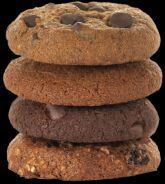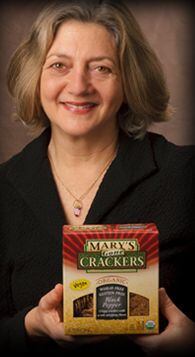Well guess again, says Mary Waldner, founder and chairman of gluten-free crackers maker Mary’s Gone Crackers.
While celiacs now enjoy more choice than ever when they shop, with gluten-free options in almost every aisle, the ingredients list (and the nutrition facts panel) on many products remains surprisingly uninspiring given the wealth of gluten-free ingredients now available to formulators, says Waldner.
It’s just a case of trial and error
Like many players in this market, Waldner got into gluten-free production because as a celiac, she was less than impressed with the sugary, nutrient-poor cardboard-textured fare on offer, and thought she could do better.
The gamble paid off, and her firm is still growing at a whopping 40% year-on-year, eight years after its 2004 debut.
But even today, says Waldner, despite a flurry of press reports about the growth of ancient grains (many of whcih are gluten-free) and increasing awareness that many celiacs may be losing out in the nutrition stakes, manufacturers in this space remain pretty conservative.
“Most gluten-free manufacturers stick with corn and white rice flour, tapioca and potato starch".
Carob flour, yellow pea flour and bean flours
So why is this?
Lots of reasons, speculates Waldner, who operates out of a 54,000 square foot gluten-free, nut-free, dairy-free, vegan, organic and kosher facility in Gridley, California.

But the chief one is simply that people have just stuck with what they know: “People still aren’t very familiar with many gluten-free grains and beans and legume flours, but you just have to try them and get out of your comfort zone.
“I’ve worked with people with 30 or 40 years’ experience in food science and they aren’t familiar with using many of these gluten-free flours at all, so it’s just a case of trial and error.
"We are working on some very exciting new products at the moment and just experimenting with new ingredients."
Waldner, whose crackers and pretzel sticks are packed with whole grain brown rice, quinoa, flaxseeds, millet and sesame seeds; and whose cookies contained unexpected ingredients from amaranth flour to the exotic - and highly nutritious - ramon (nut) powder, quinoa flakes, chia seeds and coconut palm sugar, adds: “I’m looking for ingredients that can provide fiber, protein and balanced nutrition.
“I don’t want to create products that are going to make people’s blood sugar rise. There is plenty of that junk on the gluten-free market already.”
She adds: “We’ve been experimenting with cookies with carob flour and yellow pea flour and I’m looking at a variety of bean flours for some new products that are really exciting.”
Where best to stock gluten-free products?

While the gluten-free market is consolidating, with major players now emerging in the form of Boulder Brands/Smart Balance (Udi’s, Glutino’s), Ian’s Natural Foods, General Mills and Hain Celestial, the market remains fairly fragmented, and there is still room for smaller players that have built up a strong presence in a specific market such as crackers, says Waldner.
Like a lot of smaller firms, Mary’s started in the natural and specialty store channel, where it has nationwide distribution, before gaining momentum in the food, drug and mass channel via listings at Kroger, Safeway, and Wegmans.
Retail buyers, meanwhile, “are still figuring out” where to position gluten-free products in stores to maximize sales, she adds.
In some retailers, for example, her products are stocked in a dedicated gluten-free section; in others they in the organic section; and in others they are stocked alongside conventional counterparts (her preferred positioning) to widen the potential audience.
“Our crackers have really crossed over into the mainstream now”, she says.
“They are unique, tasty products that happen to be gluten-free."
Click here for more on the size and growth of the US gluten-free market.
